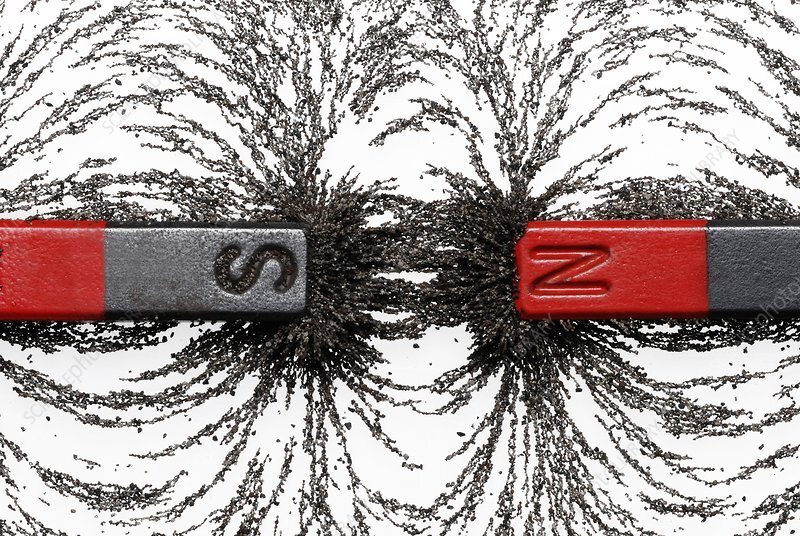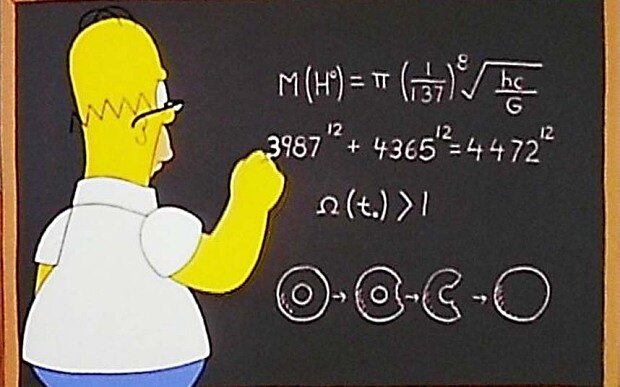After James Clear - Atomic Habits.
I ride a motorbike which I love. I love the closeness to the feeling of speed in control. I love the physicality of riding, of tilting my body to swerve and turn. There is no feeling like acceleration quite like an intentional, progressive twist of the throttle with the power pushing you whilst you balance on two wheels. But none of this pleasure would be possible if I hadn’t first made the commitment to learning and then to make it automatic. I don’t have to think about it. I can just do it. None of this would be possible if I didn’t form habits, assumptions and automatic thinking. We need habits. We need habits to survive and to thrive.
Classic Motorbike Racing
Nevertheless, it is notoriously challenging to acquire desirable new habits and even more challenging to change existing habits. There is a good reason for this, and it’s to do with the way our brains work.
Learning and acquiring new knowledge and experience is highly energy consumptive for our brains. If we had to be aware of everything around us all the time, we would be so bogged down in absorbing all that information that we wouldn’t get anything done. I couldn’t possibly give my body constant instructions to twist the throttle press the brake, corner at this or that angle, see the kerb, or the pothole, check the wind speed… you get the idea.
So, our brains commit things to automatic behaviour. It saves its precious energy and allows me to focus on exceptions (a fox just jumped out in the road ahead) or wherever I wish to place my focus. Eventually, some habits become so entrenched that we don’t even notice that they’re happening.
From another perspective, habits are often based around a craving, triggered by a cue which engenders a behaviour that leads to a reward. This cycle repeats and repeats until it has formed a robust neural pathway that becomes a part of how we react and behave. They are our paths of least resistance, and we take them as often as we can. By repetition and confirmation, they form our assumptions and our beliefs. They become us; who we are.
When we observe other people, they usually behave in reasonably predictable and consistent ways which are, to some extent unique to them and make them the person we know.
Interrupting the cycle is very difficult because it has become who we are and what we do. We try to apply enormous effort and willpower to change even small habits, often with limited success and even when we are successful, we tend to relapse.
In his remarkable book “Atomic Habits” James Clear suggests that the solution doesn’t lie in trying harder, but instead trying smarter and working with how our brains work. Working in small, simple, and achievable steps is the way to achieve successful and lasting habit change.
The book is rich in strategies, techniques and tools, for implementing lasting habit change. But there is one primary change strategy; the Four Laws of Behavioural change.
The Four Laws of Habit Change.
Superman - Obviously
1st Law; Make it obvious
Over some time, most habits become invisible, they have become so automatic that we are hardly aware that we are doing them. They are part of our unconscious minds and our automatic thinking. Firstly we need to become mindful of our behaviours.
A simple way to do this is to make a list of your habits and mark them as good, bad or neutral. The question to ask yourself at this point is: Does this behaviour help me to become the person I want to be? Remember, it’s essential to be the person rather than just pursue a goal.
All behaviour change starts with awareness. It isn’t motivation we need, it’s clarity.
If we consider the opposite of the First Law, the habit is hidden.
Having identified the habit we want to change, we must make the unconscious conscious, it must be obvious. More often than not, it’s not motivation we need its clarity.
Become aware of the behaviour and the cue that triggers the habit.
· Make a list of the habits you want to change (start small and simple).
· Mark up each habit: good +, neutral =, bad –
· Ask yourself: does this behaviour help me to become the person I want to be.
· Behaviour change always starts with awareness.
Half the battle to change a habit is to identify it and the whole cycle connected to it. That may mean having to dig a little deeper to discover where the craving comes from, what the reward is associated with the habit and why we behave in the way we do to satisfy the craving.
It also helps to put temptation out of the way and reduce exposure. It’s easier to avoid temptation rather than to resist it.
Clear suggests making a commitment to yourself by writing out a statement.
“I will [BEHAVIOUR] at [TIME] in [LOCATION]”
Magnetic Attraction
2nd Law; Make it attractive
The more attractive an opportunity is, the more likely it is to become habit-forming.
The reverse of the 2nd Law is: Make it unattractive.
The rewards cycle is fed by dopamine, almost every habit-forming behaviour is associated with higher dopamine levels. Dopamine is a type of neurotransmitter. Your body makes it, and your nervous system uses it to send messages between nerve cells. Dopamine plays a role in how we feel pleasure. To change behaviour, we need to understand the dopamine cycle.
When we first experience something desirable we get a spike in the release of dopamine which signals to us that the experience was pleasurable (assuming that it was) and sends a signal to say “I like it, do it again!”. When the next opportunity arises, or we are given a cue that it will start, our dopamine spikes, egged on by our craving. The anticipation of the event drives us towards the reward.
If we should get the cue and anticipate the reward, but it doesn’t arrive, we have a spike of anticipation and a dip where the reward was expected. If the reward does come then our dopamine spikes up again at the reward point.
A technique often used in advertising and sales is to link an action you want to with an action you need, thereby changing your behaviour by making something attractive and fun. This is called; temptation bundling.
Temptation Bundling works by linking an action you want to do with an action you need to do.
You are more likely to adopt a new habit if it is attractive. You can change behaviour by making change fun, playful, attractive and using creative solutions (the more “out-there”, the better).
Fermat and the Simpsons - Easy
3rd Law; Make it easy
We sometimes focus on figuring out the best approach that we never get around to taking action. Perfection is the enemy of the good. We should be productive rather than a perfectionist.
There was a fascinating experiment carried out in a UK art college some years ago. The students were split into two groups; one group had to produce as much work as possible within a week, whilst the other group had to create the finest piece they could in the same time. Interestingly, those that focused on the perfect piece produced low quality work. However, the group that focused on quantity rather than quality produced more work of a higher quality that the perfectionist group.
There is no substitute for turning up and doing the work and focusing on the task that moves you closer to your goal. Start with repetition, not perfection. Do the reps.
The more you repeat an action, the more it changes the neural pathways in your brain. This is something called neuroplasticity and long-term potentiation. The more you use a pattern of behaviour or thinking, the more that neural pathway strengthens.
Repeated behaviours lead to physical changes in the brain. In a very famous study of London Taxi drivers – who have to spend years learning every street in London – increased the hippocampus's physical size in their brains due to their acquired knowledge.
The easier and more comfortable we make new learning and behaviour, the better we will absorb that behaviour. Make every replacement behaviour as easy as possible.
All habits follow a similar trajectory from deliberate, effortful practice to automatic behaviour. This is called automaticity, the ability to perform an action without thinking about each step. Habits also form based on frequency, not time. To build a habit, you need to practice it. First, it does take conscious effort, which is why you should make the change as easy as possible and reduce as many barriers as possible.
Our real motivation is to do what is convenient and easy. We try to conserve our energy, and we follow the path of Least Effort. When deciding between two similar options, most of us will gravitate toward the option that requires the least amount of effort (the path of least resistance). We find what delivers the most value for the least effort.
This is why you need to make new habits so easy that you’ll do them even if you don’t feel like it. Reduce friction.
The two-minute rule.
Don’t try to do too much, too soon. When you start a new habit, it should take less than two minutes to do. To master a habit, build up slowly, make it easy to do.
Make it a ritual connected to something simple, like; once I have brushed my teeth, I will put on my running shoes. It’s better to do just a little than to do nothing at all.
Start small, simple and easy and then improve. Small, easy steps increase your probability of success.
Satisfying
4th Law; Make it satisfying
A behaviour is worth repeating and is easier to implement if it is pleasurable and satisfying. What is rewarded is repeated, and what is punished is avoided. To encourage a new habit's stickiness, we need to associate good emotions and experiences with it.
There’s a lot of evidence, particularly in memory research, that we if we commit something to memory with vivid, positive emotions, we will be better able to recall that memory when needed. When we deem something to be satisfying and pleasurable, we are more likely to do again. This can work for the avoidance of pain as well as moving towards pleasure. Make pleasure work for you.
The way our brains evaluate reward is inconsistent across time. We tend to value the present more than the future. We prize immediate rewards more than possible future rewards. Therefore, when changing a habit, we should try to ensure that the new behaviour offers an immediate reward.
Although pleasure and satisfaction in the short-term are helpful, it’s essential to question whether it aligns with and is consistent with our longer-term goals. It may defeat the objective if you are rewarded yourself by eating a plate full of cake in completing a workout.
It’s vital to feel successful – even if it’s only in a small way. Good habits tend to feel worthwhile solely after they have provided you with something. Early on, it may feel like a sacrifice and challenging, but as the habit approaches the automatic, subconscious phase, it will get easier.
Decide on an immediate reward to increase and reinforce the behaviour. It’s worth making rewards for small gains, new habits need to be enjoyable to last.
The reverse of the 4th Law is: Make it Unsatisfying.
Pleasure teaches your brain that a behaviour is worth repeating and remembering. What is rewarded is repeated, what is punished is avoided. Use reinforcement, take an immediate reward to increase the satisfaction of the new behaviour.
Over-ridding advice is to take small steps. To make new habits stick, make them as enjoyable, easy and fun as possible to implement. Some persistence is needed though, which is why you should make it as accessible as possible until it becomes automatic and you no longer have to think about it. Working with the way your brain works is the key to successful habit change.
You may also be interested in:
Why New Year’s Resolutions Don’t Work.





